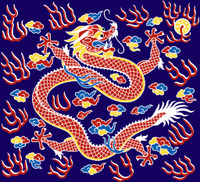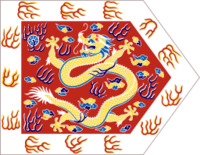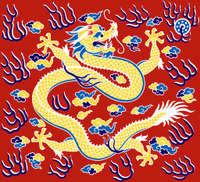Qing Dynasty: To Variolate a Nation
“I had it used upon you, my sons and daughters, and my descendants, and you all passed through the smallpox in the happiest possible manner. The Forty-nine Banners of the Mongolians and even the Chiefs of the Kalka people have made use of inoculation and all of them were perfectly healed. The courage which I summoned up to insist on its practice has saved the lives and health of millions of men. This is an extremely important thing, of which I am very proud.” —Kangxi Emperor (Grant 2019, p. 1)
Historians struggle to identify when variolation became an established medical practice in China-- gaps in the historical medical record make it hard to determine an exact date-- but it is clear that variolation was performed in China for at least two centuries before the practice spread to Europe in the 1700's. Due to Confucian taboos about breaking the inviolability of the human body through surgical cuts, variolation in China was largely performed by sticking bundles of smallpox tissue in a patient's nose.
While in countries like Great Britain lay people were trained to vaccinate in order to support the proliferation of of life-saving knowledge, knowledge of variolation was closely guarded in China and treated as a trade secret, to be passed down from master to apprentice and never outside the medical profession. Indeed, the first European made privy to Chinese variolation techniques-- the French Jesuit priest François Xavier d'Entrecolles-- was only told the secret because he promised to only divulge it back home in far-away Europe.
It would not be until the Qing Dynasty that variolation in China became part of public health, rather than a private family practice. Events were set in motion when the Shunzi Emperor succumbed to smallpox in 1662 and a succession crisis arose. Normally the throne would pass to the late emperor's eldest son, but he was blind in one eye and had yet to contract and survive smallpox, that disease which claimed the live of so many children, especially those of Manchu ethnicity. Thus, for the sake of dynastic stability, power passed to the second eldest son, who had survived and thereby acquired immunity to smallpox by mixing powdered smallpox scabs into soup.
This royal dilemma was key to the future decision of that second son, the Kangxi Emperor, to expand the practice of variolation among his subjects. In 1678, the emperor arranged for his family to be variolated; in 1681, the variolation campaign was expanded to the Chinese military and their families. Historians estimate the campaign to immunize the soldiers who defended the Great Wall and their relatives affected 4,200,000 people. In 1682, the variolation campaign proceeded to Mongolian and Manchu tribes in the emperor's domain, bringing immunization to hundreds of thousands more individuals.










